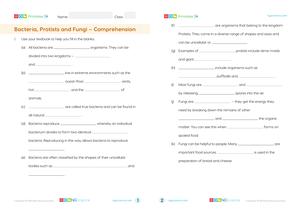Begin the lesson by discussing common illnesses like the flu and cold to introduce viruses. Explain that viruses are not living organisms but microscopic germs that require a host to replicate.
Go to the LessonLearning Objectives
- Understand the basic structure and characteristics of viruses, including why they are not considered living organisms.
- Explain how viruses replicate using host cells and the impact of this process on the host organism.
- Identify common illnesses caused by viruses and describe how the body's immune system responds to viral infections.
- Describe how vaccines work to protect against viral infections and their role in preventing virus spread.
- Recognize the importance of preventive measures, such as masks and hygiene, in controlling the spread of viruses during a pandemic.
Introduction and Hook
Direct Instruction
Explain the structure and characteristics of viruses, emphasizing why they are not considered living organisms. Discuss how viruses replicate using host cells.
Guided Exploration
Explore how viruses cause illnesses and the body's immune response. Discuss common viral infections and symptoms.
Introduce the concept of vaccines and their role in preventing viral infections. Explain how vaccines train the immune system.
Hands-On Activity
Conduct a classroom discussion on preventive measures during a pandemic, such as wearing masks and maintaining hygiene.
Independent Practice
Assign students to research a specific virus and present its characteristics, mode of transmission, and preventive measures.
Check for Understanding
Review and Reflection
Reflect on the importance of vaccines and preventive measures in controlling virus spread. Discuss the impact of pandemics on society.
Assessment and Extension
Test comprehension with the 'Review – Life on Earth' assessment, focusing on biological classification and the roles of organisms.
Try the Quiz



